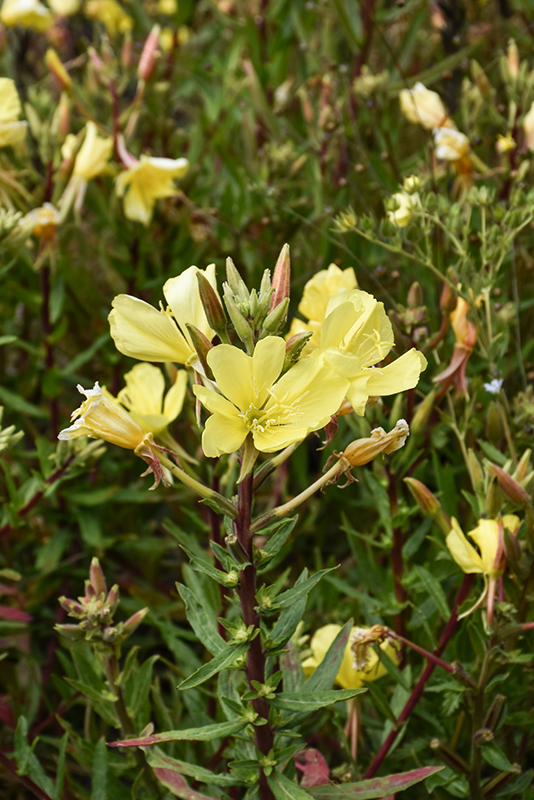VANDERMEER
PLANT LIBRARY
Find the perfect plant for your space by browsing through this extensive selection that we typically carry every year.
This library is for information purposes only.
Height: 5 feet
Spacing: 30 inches
Sunlight:
![]()
![]()
Hardiness Zone: 4a
Other Names: Evening Star, Cure-all, Oenothera muricata
Description:
From a basal rosette rises leafy branched stems, bearing bright yellow, lemon scented, four petaled flowers that open at night; a biennial that gets established in the first year, then flowers in the second during summer and fall
Ornamental Features
Common Evening Primrose has masses of beautiful clusters of lightly-scented yellow cup-shaped flowers at the ends of the stems from late spring to late summer, which emerge from distinctive rose flower buds, and which are most effective when planted in groupings. Its pointy leaves remain olive green in colour throughout the season. The burgundy stems can be quite attractive.
Landscape Attributes
Common Evening Primrose is an herbaceous biennial with an upright spreading habit of growth. Its relatively fine texture sets it apart from other garden plants with less refined foliage.
This plant will require occasional maintenance and upkeep, and should not require much pruning, except when necessary, such as to remove dieback. It is a good choice for attracting birds and bees to your yard, but is not particularly attractive to deer who tend to leave it alone in favor of tastier treats. Gardeners should be aware of the following characteristic(s) that may warrant special consideration;
- Spreading
- Self-Seeding
Common Evening Primrose is recommended for the following landscape applications;
- Mass Planting
- Border Edging
- General Garden Use
- Groundcover
- Naturalizing And Woodland Gardens
Planting & Growing
Common Evening Primrose will grow to be about 5 feet tall at maturity, with a spread of 3 feet. When grown in masses or used as a bedding plant, individual plants should be spaced approximately 30 inches apart. Its foliage tends to remain dense right to the ground, not requiring facer plants in front. It grows at a fast rate, and tends to be biennial, meaning that it puts on vegetative growth the first year, flowers the second, and then dies. However, this species tends to self-seed and will thereby endure for years in the garden if allowed.
This plant does best in full sun to partial shade. It prefers dry to average moisture levels with very well-drained soil, and will often die in standing water. It is considered to be drought-tolerant, and thus makes an ideal choice for a low-water garden or xeriscape application. This plant does not require much in the way of fertilizing once established. It is not particular as to soil type or pH. It is somewhat tolerant of urban pollution. This species is native to parts of North America..





